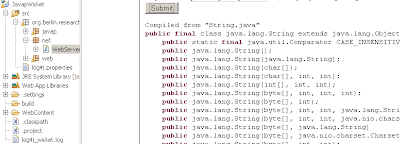Simple Object Model - Bottom up Cell Life Demo

- The system is slightly interesting. You can monitor the balance with the number of live cells. You may notice a shift in mutations as cells grow away from the center. - With only a few mutations, the color of cells tend to shift in color over time. - It takes many iterations for emergent behavior to emerge. - Code wise not really that interesting but already we can visualize the emergent behavior. - Cheating to make the simulation feasible Code trait LivingEntityCell { def getName : String def getDNA : DNA def alive : Boolean def processDNA() : Unit def produceProteins() : Unit def onStepSimulationProcessCell() : Unit def getMutableSize : Int def setImmutableSystemTraits : Unit def onStepSetSystemTraits : Unit /** * Metabolic reaction and process to convert energy. * In our system, amount of energy for this cell. */ ...
